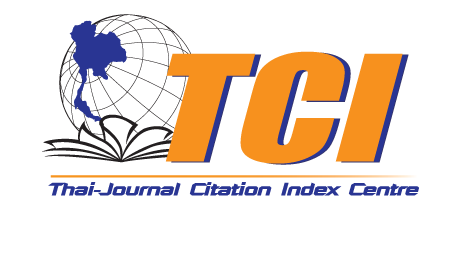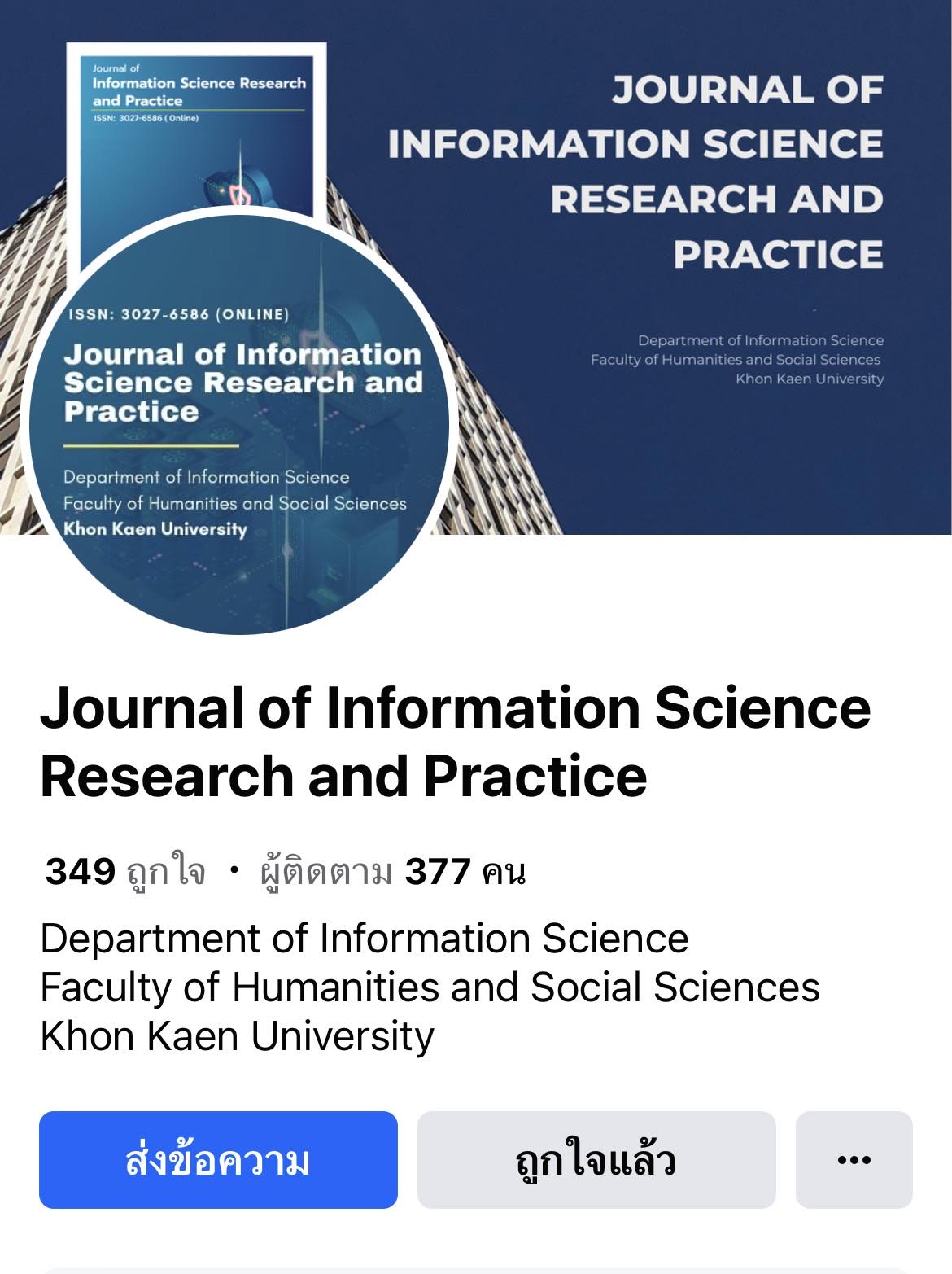Author Guidelines
Manuscript Submission Overview
- Manuscripts submitted should not have been previously published and must not be concurrently under consideration for publication in any other journal.
- Submissions for publication must adhere to specific formatting requirements outlined by the journal, including a maximum limit of 18 A4 paper pages and the use of the "TH Sarabun New" font 16 points. For detailed instructions on manuscript preparation, authors are advised to refer to the guidelines provided. In cases where it is necessary to be more than 18 pages, the decision depends on the consideration of the editorial team.
- Authors bear the responsibility of ensuring the authenticity of their manuscripts, encompassing aspects such as format, spelling, punctuation, and language usage.
Accepted File Formats
Authors are required to employ the Microsoft Word Template when preparing their manuscripts. Employing this template will considerably expedite the copy-editing process and enhance the efficiency of manuscript publication once accepted.
Manuscript Preparation
1. Title: For Thai articles, the manuscript title should be presented in both Thai and English. The Thai title should be displayed first, followed by the English title on the subsequent line. For English articles, there is no need to provide the original title in Thai.
2. Author: For articles in Thai, author details should be provided in both Thai and English. For Articles in English, there is no need to include Thai translations.
3. Affiliation:
-
- For Thai Articles, Affiliation information must be provided in both Thai and English. Position or academic status should not be specified. If there are multiple affiliations, choose only one. Arrange these affiliations in descending order, starting from lower-level departments to main departments, such as "Department of Information Science, Faculty of Humanities and Social Sciences, Khon Kaen University."
- For Articles in English, there is no need to include Thai translations.
4. Author contact information: Please include the email address of the corresponding author for contact and correspondence purposes.
5. Abstract:
Research articles:
- For Thai Articles, The Abstract must be both Thai and English. The Thai abstract should be displayed first, followed by the English. These abstracts should encapsulate the study's objectives, methodology, findings, and practical implications.
- For English Articles, There is no need to include Thai translations.
Academic articles and Review articles:
- For Thai Articles, the Abstract must be both Thai and English. The Thai abstract should be displayed first, followed by the English. The abstract should present the article as a summary, written in a single paragraph, with a word limit of no more than 250 words.
- For English Articles, There is no need to include Thai translations.
6. Keywords: For Thai Articles, the Keywords must be both Thai and English. For English Articles, There is no need to include Thai translations.
7. Content of the article:
-
- Research articles should adhere to the following structured sequence: Introduction, Purpose, Methodology, Results, Discussion, Additional Topics, and Acknowledgments (if applicable).
- Academic articles, Review articles, and Book reviews should structure their articles in accordance with the specific requirements relevant to their respective topics.
8. Reference: References must be meticulously formatted in accordance with the APA7 format (American Psychological Association). Please refer to the guidelines outlined in the References section for detailed instructions.
-----------------------------------------------------------------------------------------------------------------------------------------------------
The Guidelines on References
References should consistently adhere to the APA7 (American Psychological Association) format, with all references in English throughout the entire article.
In-text citations should include the author's name and year in parentheses immediately following the reference in the text. If the author's name is integrated into the text, it is sufficient to enclose the year of publication and page number within parentheses following the author's name.
Books
Format: Author. (Year). Book title (Edition, if applicable). Publisher.
Example:
Srikantaiah, T. K., & Koenig, M. E. D. (Eds.). (2000). Knowledge management for the information professional. American Society for the Information Science.
Lorsuwannarat, T. (2006). Learning organization: From the concepts to practices (3rd ed.). (In Thai). Ratanatri.
Articles in the Journal
Format: Author. (Year). Title of article. Journal Title, Volume(Issue), Page numbers. https://doi.org/xxxx (if available)
Example:
Bartol, K. M., & Srivastava, A. (2002). Encouraging knowledge sharing: The role of organizational reward systems. Journal of Leadership and Organization Studies, 9(1), 64–76.
Website
Format: Author. (Year). Title. URL
Example:
Rochester, M. K., & Vakkari, P. (2003). International library and information science research: A comparison of national trends. https://archive.ifa.org/VI/s24/publiflapr82-e.pdf
Dissertation or Thesis
Format: Author. (Year). Title of dissertation or thesis (Doctoral dissertation or Master’s thesis, University). Database or URL
Example:
Hoaihongthong, S. (2019). Metadata requirement development for mural painting (Master’s thesis, Khon Kaen University). (In Thai).
Conference Papers
Format: Author. (Year). Title of paper. In Editor(s) (Ed./Eds.), Proceedings title (pp. xx–xx). Publisher.
Example:
Hanghøj, T., et al. (2014). Redesigning and reframing educational scenarios for Minecraft within mother tongue education. In Proceedings of The European Conference on Games-Based Learning (pp. 182–190). Curran Associates.
Reports
Format: Author. (Year). Title of report (Report No. if available). Publisher. https://doi.org/xxxx หรือ URL
Example:
Ferrari, A. (2013). DIGCOMP: A framework for developing and understanding digital competence in Europe (JRC Technical Report). Publications Office of the European Union.
Organizational Website or Report
Format: Organization Name. (Year). Title of document. URL
Example:
JISC. (2014). Developing digital literacies. https://www.jisc.ac.uk/full-guide/developing-digital-literacies
Documents in Non-English Language
The cited document is not authored in the English language. Consequently, it is imperative that the title be presented in Thai Romanization, which involves transliterating Thai characters into Roman characters. It is advisable to utilize a transliteration program developed by NECTEC, accessible at http://164.115.23.167/plangsarn/index.php
Furthermore, it is essential to provide English translations for these titles, enclosed within square brackets [...], followed by the indication of the document's original language, exemplified by specifying "(In Thai)" as elucidated in the subsequent example:
(Thai Title in Romanization) [English Translation] (In Thai)
This approach facilitates clarity and comprehension when referencing non-English documents in an English-language context.
Example of Reference
Format: Author. (Year). Romanized title [English translation]. (In Thai). Publisher.
Example:
Vongprasert, C. (2005). Kanchatkan sarasonthet buangton [Introduction to Information Management]. (In Thai). Expernet Co., LTD.
Prakophon, A. (1983). Sathanborikan ekkachon kap kan songsoem kan an [Private service establishments and the promotion of reading]. (In Thai). Bannaraksat Mokho, 1(3), 1–5.





